Traveler Profile: Katie, UK
Location: Muscat, Oman
Time of Year: April
Travel Goals: Great photography locations, honing my haggling skills, beach and luxury
Having lived in the UAE for many years, Muscat was a hop, skip, and jump away for a quick weekend escape. Muscat, the capital of Oman, is a fascinating blend of ancient heritage and modern dynamism, set against the backdrop of stunning landscapes and architectural marvels. From the aromatic lanes of traditional souqs to the serene grandeur of its mosques and the natural wonders that lie just beyond the city limits, Muscat offers a day of exploration that promises to enrich and delight. My guide will navigate you through a comprehensive itinerary, ensuring that you experience the essence of Muscat from dawn to dusk.
Breakfast at Bait Al Luban Omani Restaurant

Image Credit: Shutterstock / Mahara
Begin your day at Bait Al Luban, a restaurant that is as much a feast for the eyes as it is for the palate. Housed in a restored traditional Omani house overlooking the Muscat harbor, this dining establishment offers an authentic Omani breakfast experience. The menu features a variety of local dishes, including shakshouka, a savory egg dish, and khubz, freshly baked Arabic bread, all complemented by the rich flavors of Omani coffee. The restaurant’s interior, adorned with Omani crafts and photos, provides a warm and inviting atmosphere, setting the stage for a day of discovery.
My Insider’s Tip: Ask for a table with a view of the harbor to enjoy the morning light reflecting off the water, a truly serene start to your day.
Explore Muttrah Souq
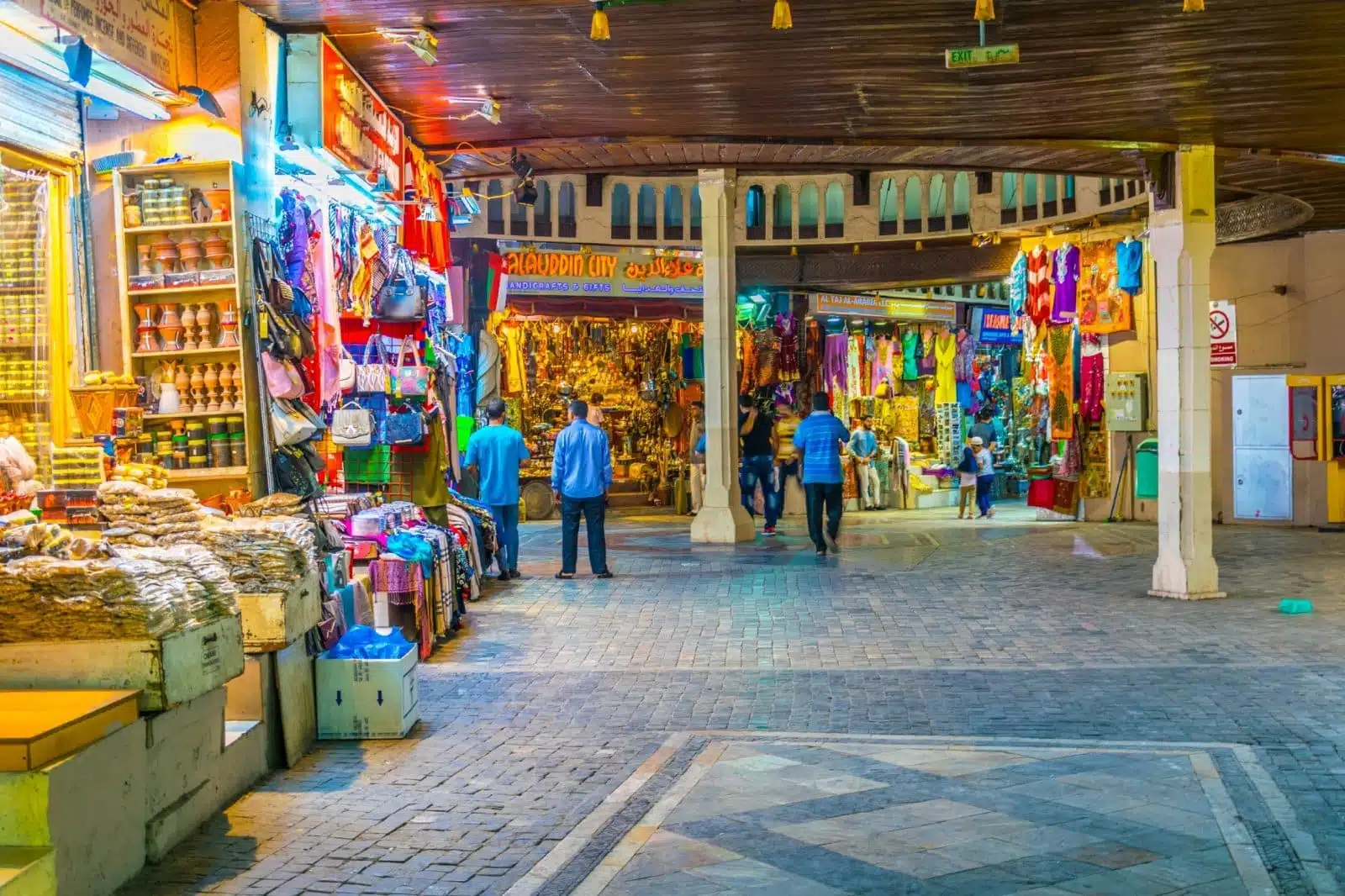
Image Credit: Shutterstock / trabantos
A short walk from Bait Al Luban, the Muttrah Souq awaits. This ancient market is a labyrinth of narrow alleys with shops selling everything from traditional Omani garments and intricately designed silverware to fragrant frankincense and colorful textiles. The souq is a sensory overload, with the air filled with the scent of spices and the sound of haggling shoppers. It’s a place where the past and present of Omani culture blend seamlessly.
My Insider’s Tip: Be sure to venture into the less crowded lanes of the souq to find unique handicrafts and antiques, and don’t hesitate to bargain, as it’s part of the shopping experience.
Sultan Qaboos Grand Mosque
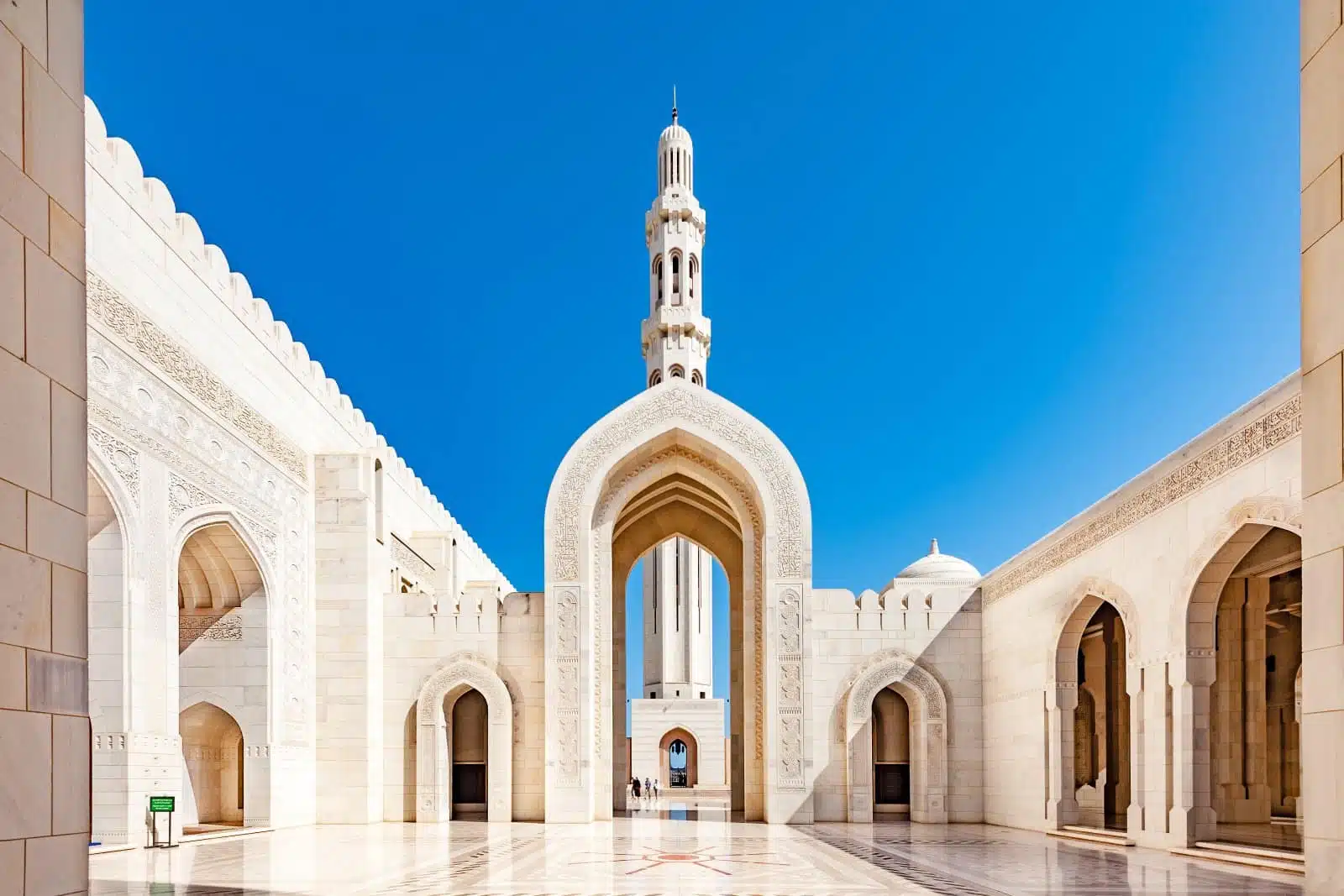
Image Credit: Shutterstock / Hamdan Yoshida
The Sultan Qaboos Grand Mosque highlights contemporary Islamic architecture. Open to non-Muslim visitors, this mosque can accommodate up to 20,000 worshippers. A breathtaking chandelier dominates the main prayer hall and is home to one of the world’s largest hand-loomed Persian carpets. The mosque’s intricate artisanship, from the detailed mosaics to the grand archways, reflects Oman’s rich cultural heritage.
My Insider’s Tip: Dress modestly and arrive early to enjoy the mosque in the softer light and quieter atmosphere of the morning.
Lunch at The Jungle Restaurant
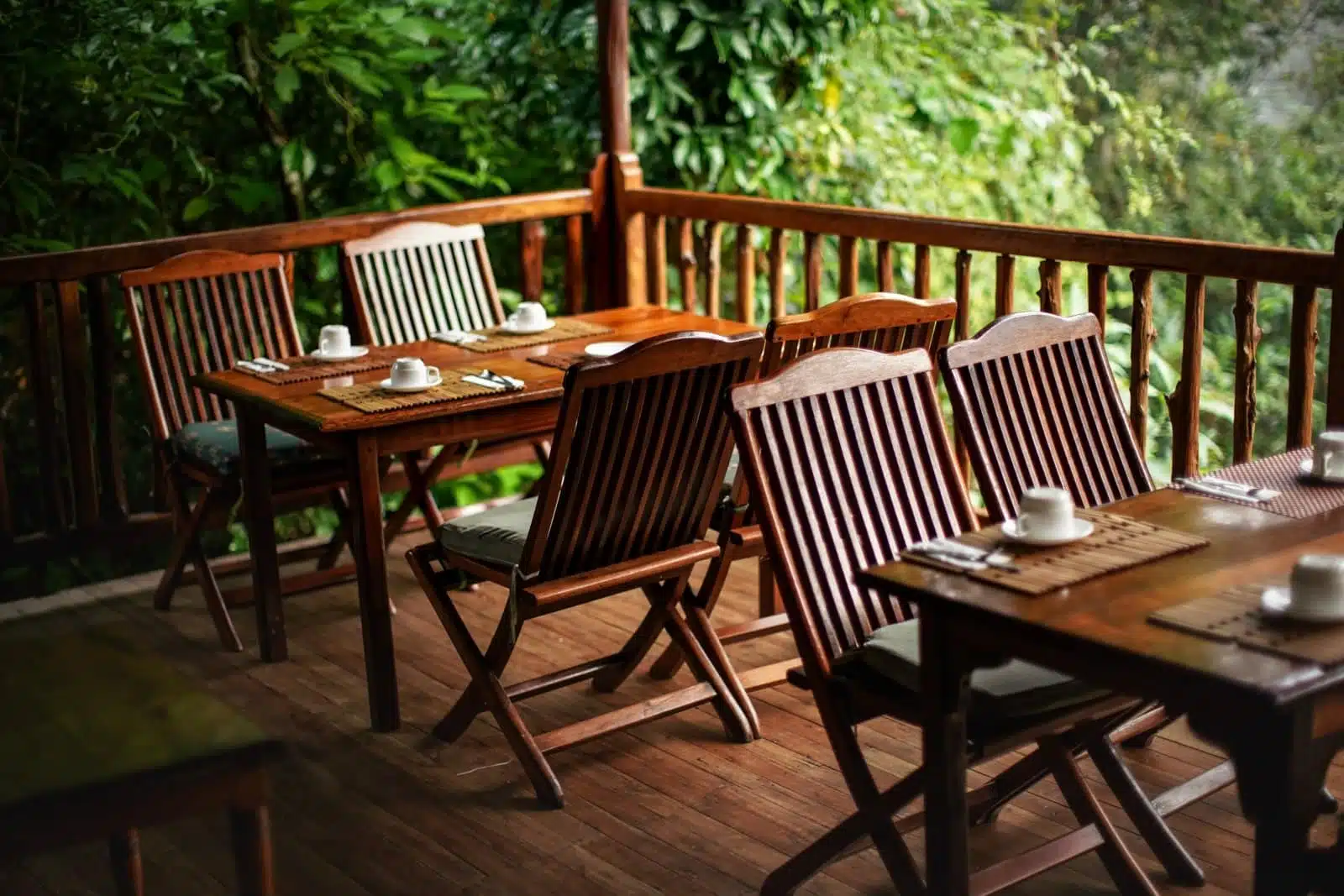
Image Credit: Shutterstock / Lubo Ivanko
The Jungle Restaurant offers a dining experience like no other in Muscat. Set within a themed indoor “jungle,” complete with artificial trees, waterfalls, and animal sounds, this restaurant serves various dishes spanning Arabic, Indian, Chinese, and Continental cuisines. The unique ambiance, combined with the diverse menu, makes for a memorable lunch stop.
My Insider’s Tip: Try the mixed grill for a taste of local flavors, and don’t miss the chance to enjoy the restaurant’s signature mocktails.
Wadi Shab & Bimmah Sinkhole Tour

Image Credit: Shutterstock / Pearl-diver
Embark on an adventure to Wadi Shab, a stunning natural gorge carved out of the mountains, offering crystal-clear pools, waterfalls, and terraced plantations. The journey to the wadi involves a scenic hike and a swim through the emerald waters, leading to a hidden waterfall inside a cave. On your return, stop by the Bimmah Sinkhole, a natural limestone crater filled with azure water, perfect for a refreshing dip.
My Insider’s Tip: Wear comfortable shoes and bring a waterproof camera to capture the breathtaking scenery and your moments of adventure.
Dinner at Al Angham Restaurant
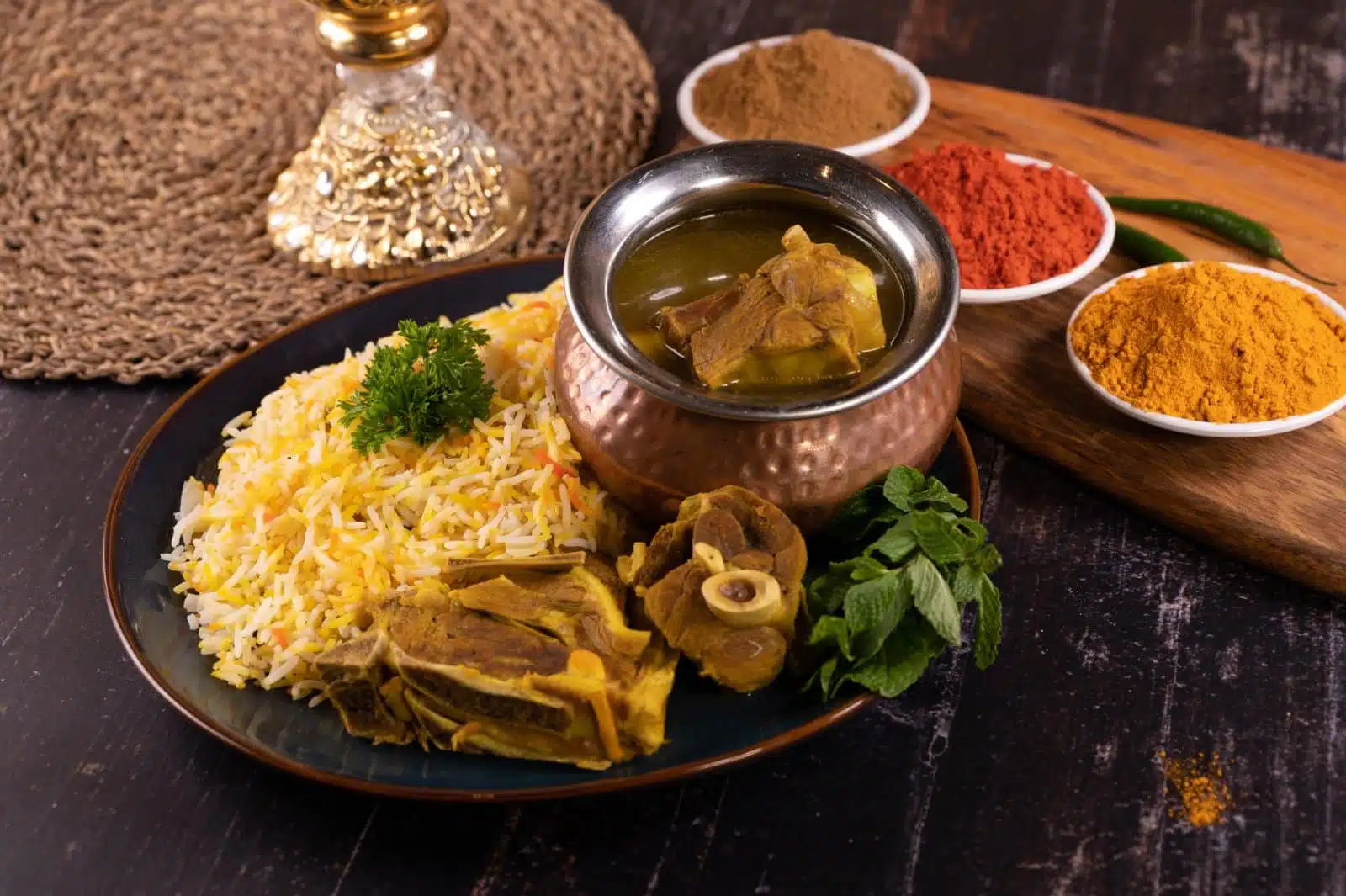
Image Credit: Shutterstock / ammar al-kubati
Located at the Royal Opera House Muscat, Al Angham Restaurant is the epitome of Omani luxury dining. The restaurant’s menu showcases the finest in Omani cuisine, served in an opulent setting inspired by the country’s rich artistic heritage. Each dish is a work of culinary art, offering traditional and refined flavors.
My Insider’s Tip: Reserve in advance and request a table near the window for views of the illuminated opera house.
Stroll along Qurum Beach
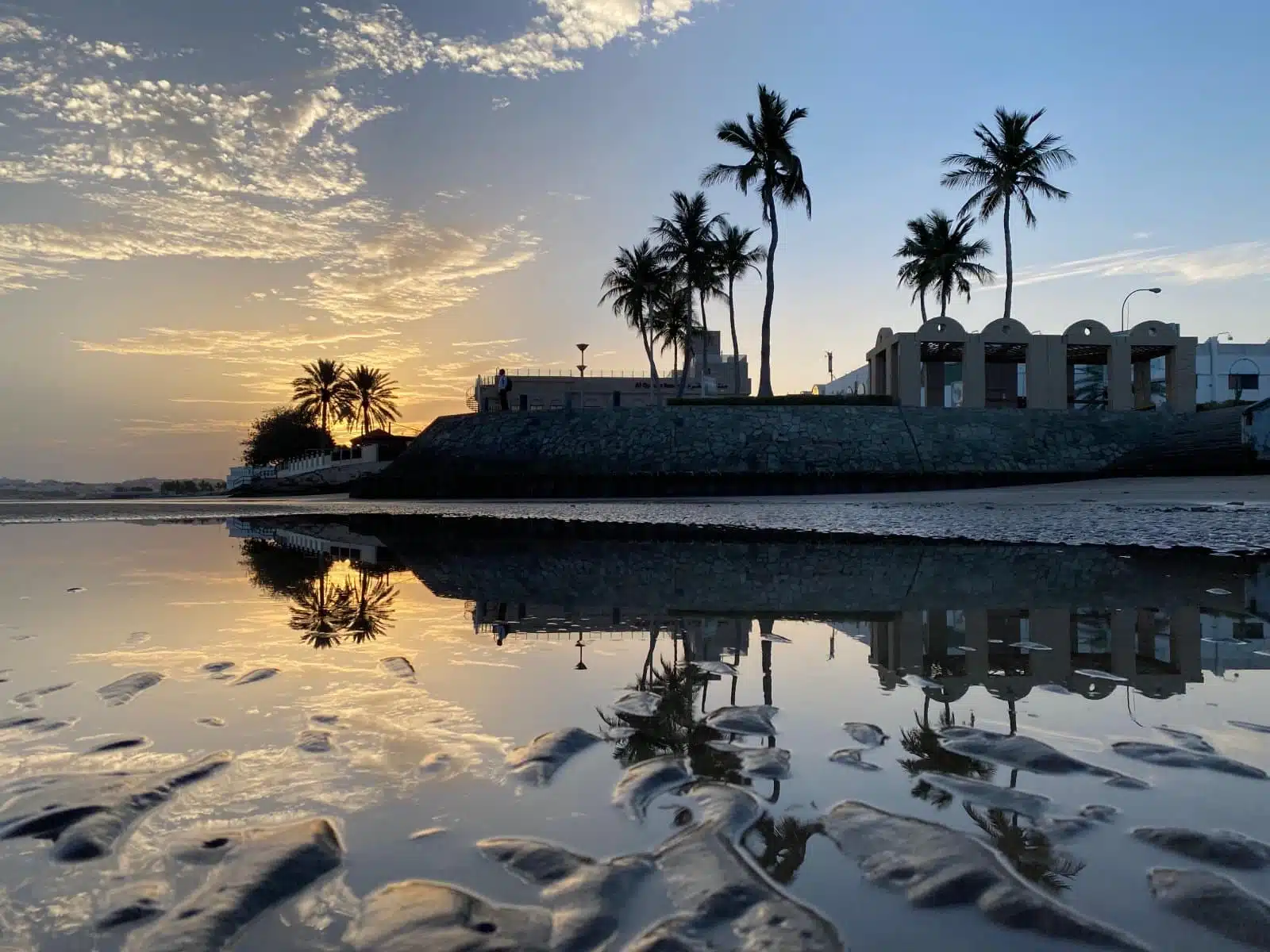
Image Credit: Shutterstock / Bassem Zein
End your day with a leisurely walk along Qurum Beach, where the city’s cosmopolitan vibe meets the tranquil beauty of the Arabian Sea. The beachfront comes alive in the evening, with families and friends gathering to enjoy the cool breeze and the sound of the waves.
My Insider’s Tip: Find a quiet spot to sit and watch the sunset, a peaceful conclusion to a day filled with exploration and discovery.
Overnight Accommodation at the Chedi Muscat

Image Credit: Shutterstock / Hamdan Yoshida
The Chedi Muscat offers an oasis of tranquility and luxury. With its minimalist design, extensive gardens, and stunning pools, the hotel provides a serene retreat to unwind after a day of exploration. The Chedi’s spa, with its range of treatments inspired by Eastern and Western healing practices, is the perfect way to rejuvenate.
My Insider’s Tip: Book a room with a view of the Gulf of Oman to enjoy the serene vistas and the gentle sound of the waves.
History of Muscat
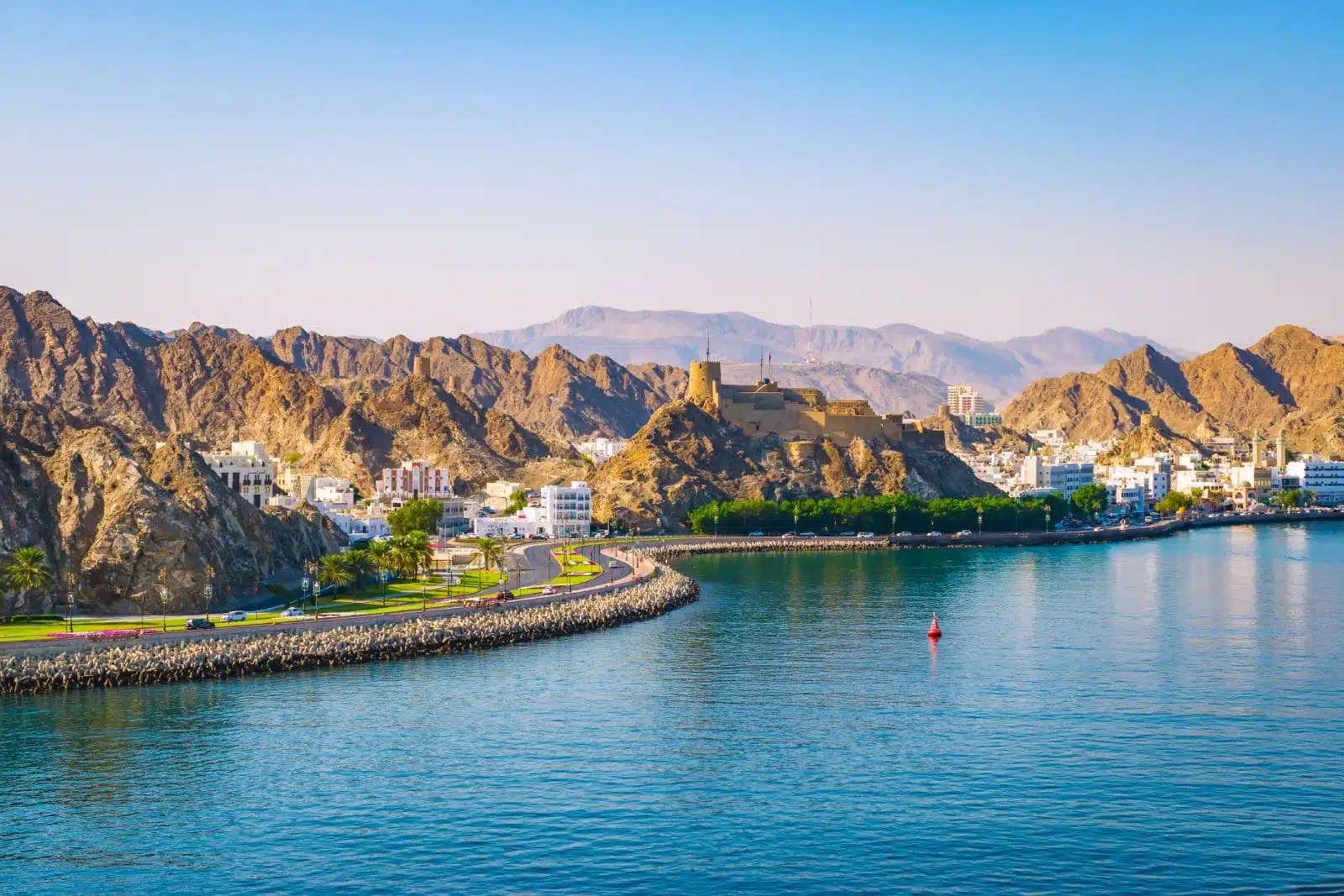
Image Credit: Shutterstock / Nancy Pauwels
The history of Muscat, the capital city of Oman, has a rich heritage that weaves together centuries of maritime trade, strategic military importance, and cultural exchange. Its strategic location on the Arabian Sea has made Muscat a vital trading port between the East and the West, a status that has shaped its history and development.
The earliest recorded mention of Muscat dates back to the 1st century CE, in the works of the Greek geographer Ptolemy, who referred to it as “Cryptus Portus,” meaning the Hidden Port. This early reference underscores Muscat’s significance as a well-protected and strategically located port city, even in ancient times. The region around Muscat has been inhabited since the 6th millennium BCE, as evidenced by archaeological findings, indicating a long history of human settlement and civilization.
During the 7th century, with the advent of Islam, Muscat gained prominence as an important center of trade and Islamic learning. The city’s strategic position along maritime trade routes made it a valuable asset for controlling the trade between the Indian Ocean and the Persian Gulf. Throughout the medieval period, Muscat was contested by various regional powers, including the Persians, the Portuguese, and the Ottomans, each leaving a distinct imprint on the city’s architectural and cultural landscape.
The Portuguese occupation of Muscat in the 16th century marked a significant period in its history. They fortified the city and built several forts, including the Al Jalali and Al Mirani, which still stand today as reminders of Muscat’s strategic importance. The Portuguese control of Muscat facilitated their dominance over the maritime trade routes in the Indian Ocean, but it also led to resistance from local tribes.
In the 17th century, the Ya’aruba dynasty, an Omani tribal confederation, expelled the Portuguese and established Muscat as the capital of the Omani Empire. Under their rule, Muscat flourished as a center of trade, attracting merchants from across the world. The city became a cosmopolitan hub, with a diverse population of Arabs, Balochis, Indians, and Africans, contributing to its rich culture.
The 18th and 19th centuries saw Muscat’s influence extend across the Indian Ocean, with the Sultanate establishing a powerful maritime empire that included parts of present-day Pakistan, Iran, and East Africa. The city’s prosperity during this period was largely due to its control over the lucrative trade in frankincense, horses, and enslaved people.
In the 20th century, the discovery of oil transformed Oman’s economy and led to significant modernization and development in Muscat. Today, while it embraces modernity, Muscat retains its historical character, with its ancient forts, traditional souqs, and historic buildings standing alongside contemporary architecture and infrastructure.
When to Travel
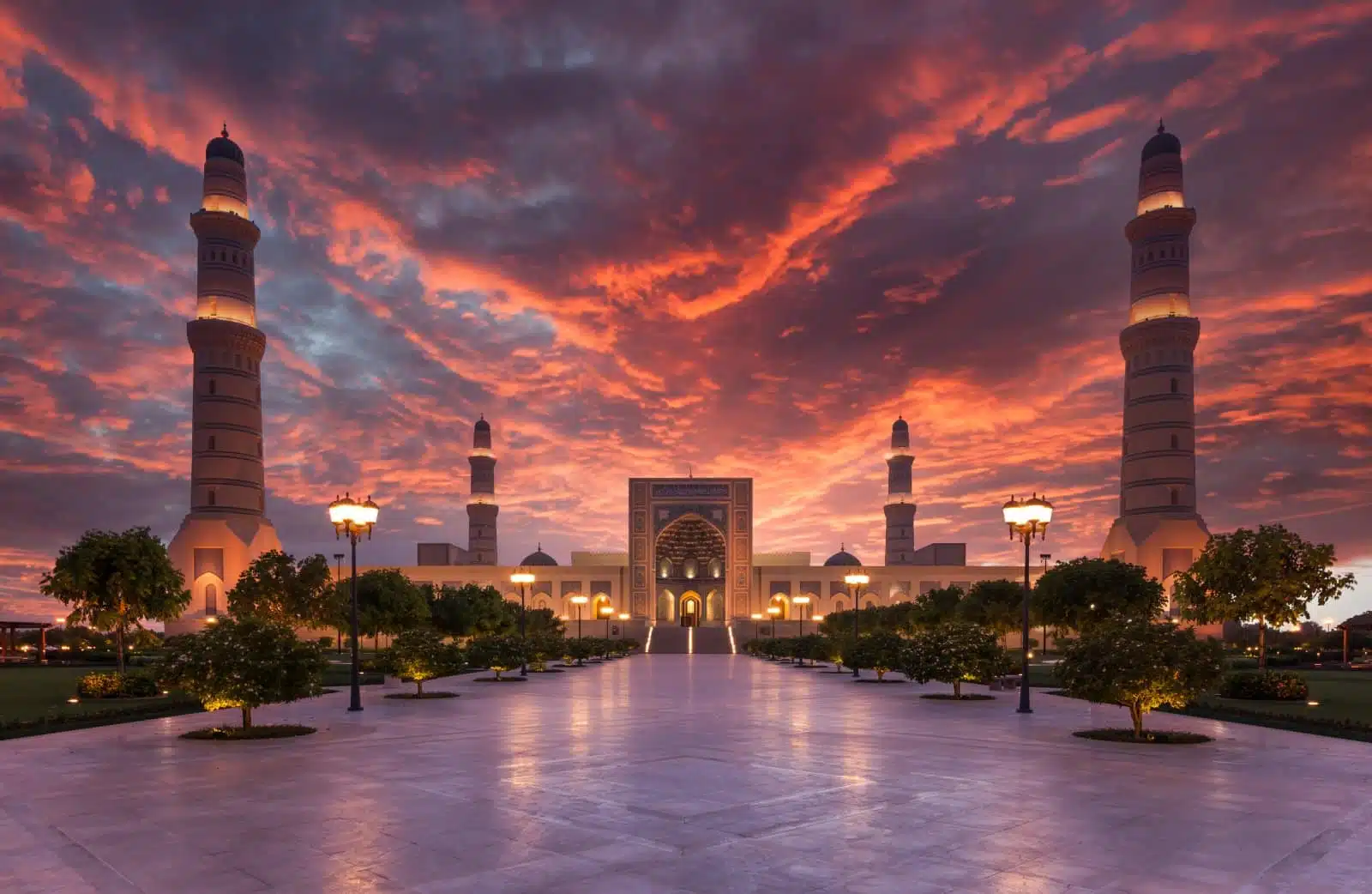
Image Credit: Shutterstock / Chris Troch
The best time to visit Muscat is between October and April when the weather is cooler and more conducive to exploring the outdoors. From May to September, the summer can be extremely hot, with temperatures often exceeding 40°C (104°F).
How to Get There
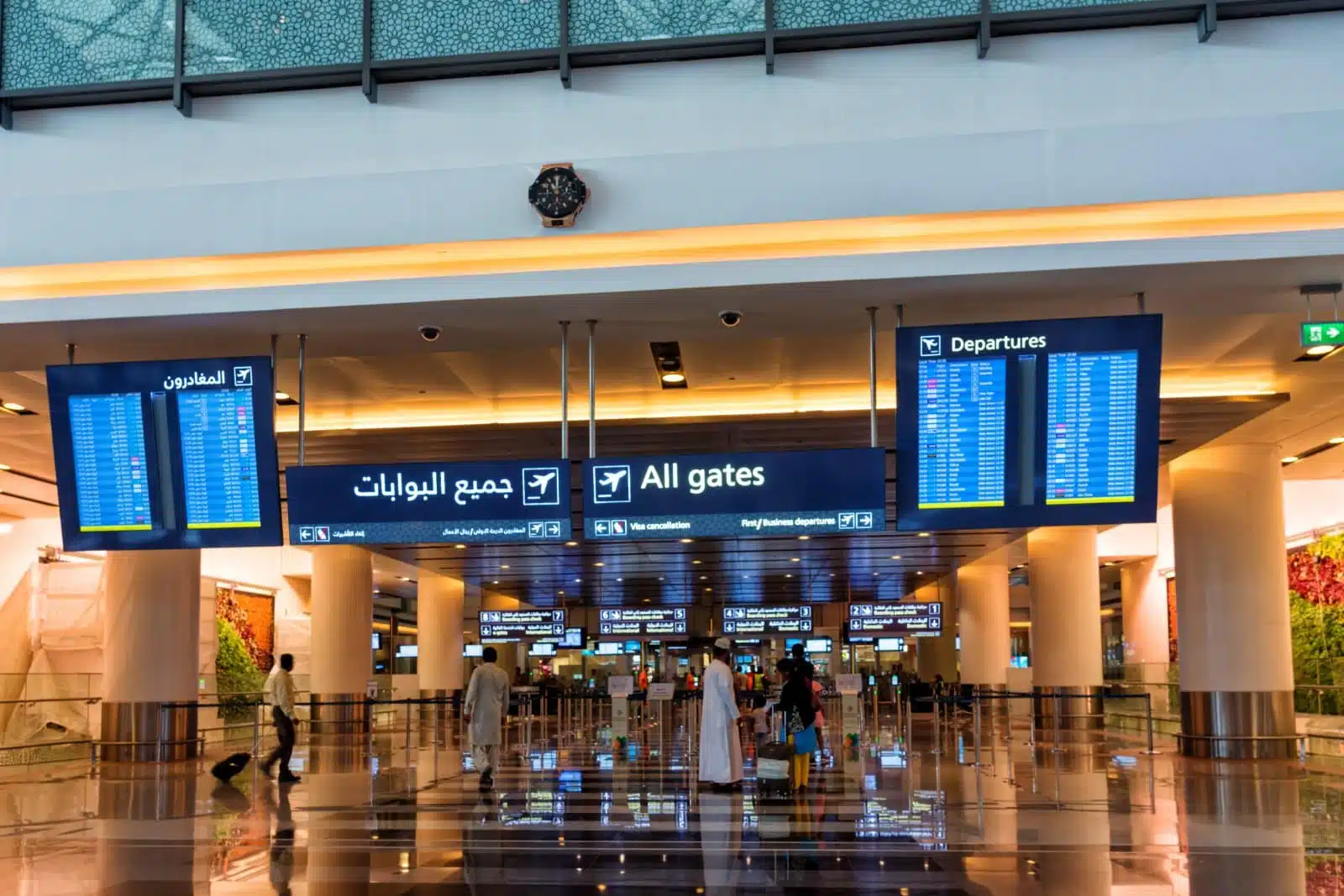
Image Credit: Shutterstock / Milosz Maslanka
Muscat is served by the Muscat International Airport, which is well-connected to major cities around the world. Upon arrival, taxis and car rental services are available to take you to the city. Muscat’s road network is modern and well-maintained, making it easy to navigate by car.
The Bottom Line
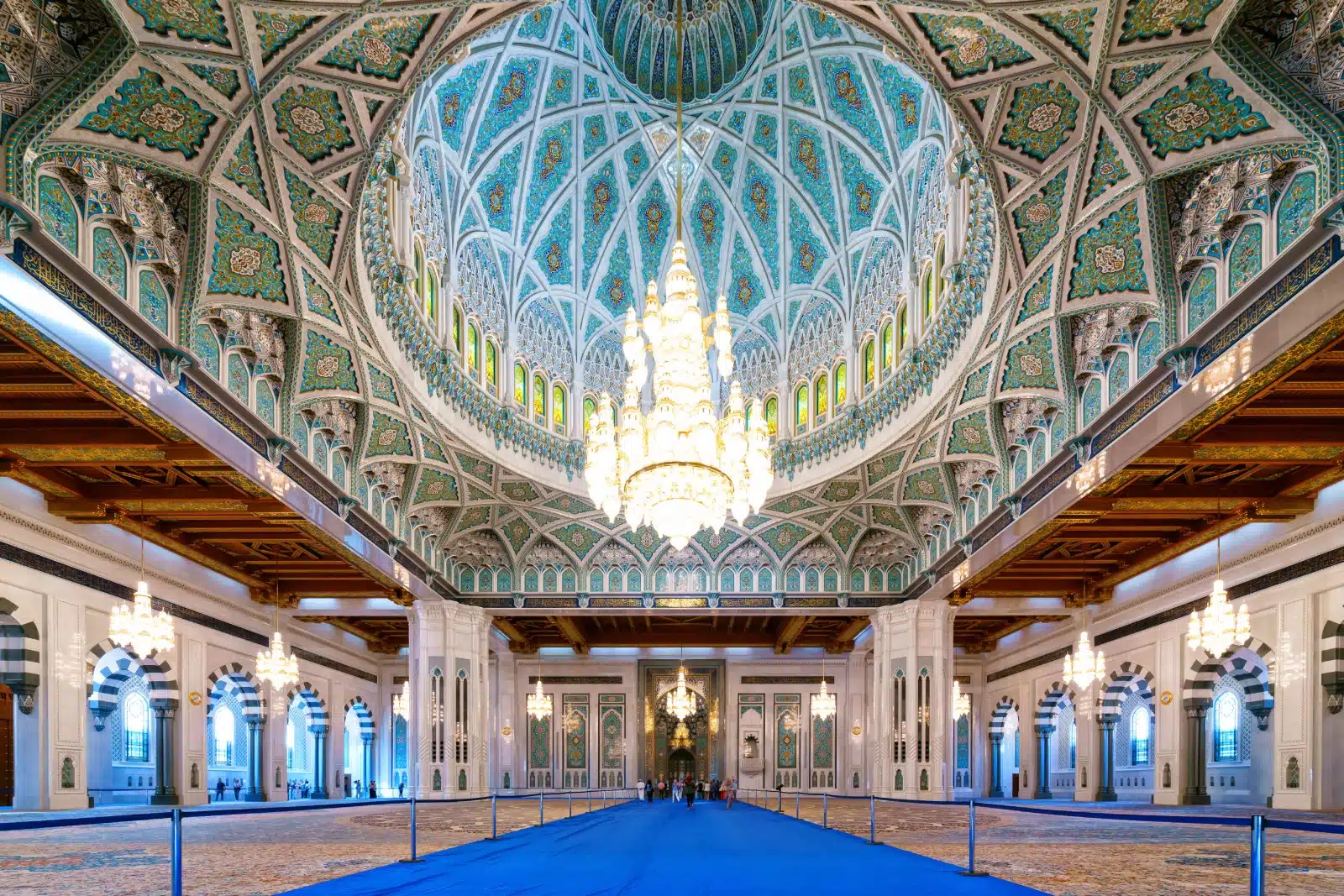
Image Credit: Shutterstock / Milosz Maslanka
With its rich tapestry of experiences, Muscat offers a journey through time, from the ancient alleys of Muttrah Souq to the modern elegance of the Sultan Qaboos Grand Mosque, set against the natural beauty of Oman’s landscapes. This guide has navigated you through a day in Muscat, blending cultural heritage with natural wonders and culminating in a night of luxury and relaxation. As you retire to your room at The Chedi Muscat, reflect on the day’s adventures and the memories made, knowing that Muscat has offered you a glimpse into the soul of Oman.
More From The Green Voyage
Top 10 Trending Travel Destinations 2024
6 Essential Banking Apps for International Travel – Managing Your Finances on the Go
Traveling With Kids – 10 Tips to Create Memorable Family Holidays
The post A Day in…Muscat, Oman first appeared on The Green Voyage.
Featured Image Credit: Shutterstock / Almotasam Albalushi.
For transparency, this content was partly developed with AI assistance and carefully curated by an experienced editor to be informative and ensure accuracy.
Tips for Trip Success
Book Your Flight
Find an inexpensive flight by using Kayak, a favorite of ours because it regularly returns less expensive flight options from a variety of airlines.
Book Your Hotel or Special Accommodation
We are big fans of Booking.com. We like their review system and photos. If we want to see more reviews and additional booking options, we go to Expedia.
You Need Travel Insurance!
Good travel insurance means having total peace of mind. Travel insurance protects you when your medical insurance often will not and better than what you get from your credit card. It will provide comprehensive coverage should you need medical treatment or return to the United States, compensation for trip interruption, baggage loss, and other situations.Find the Perfect Insurance Plan for Your Trip
